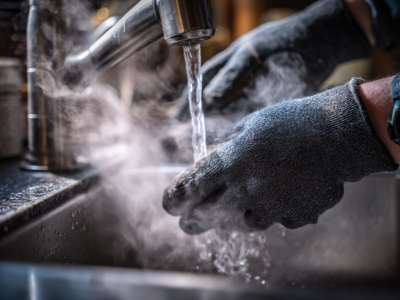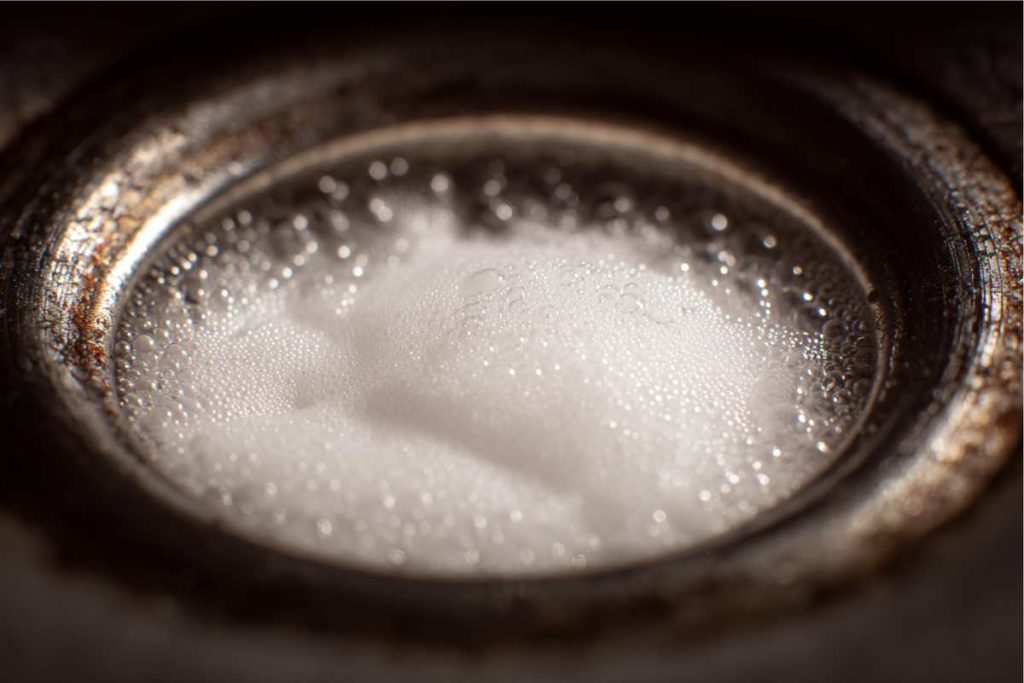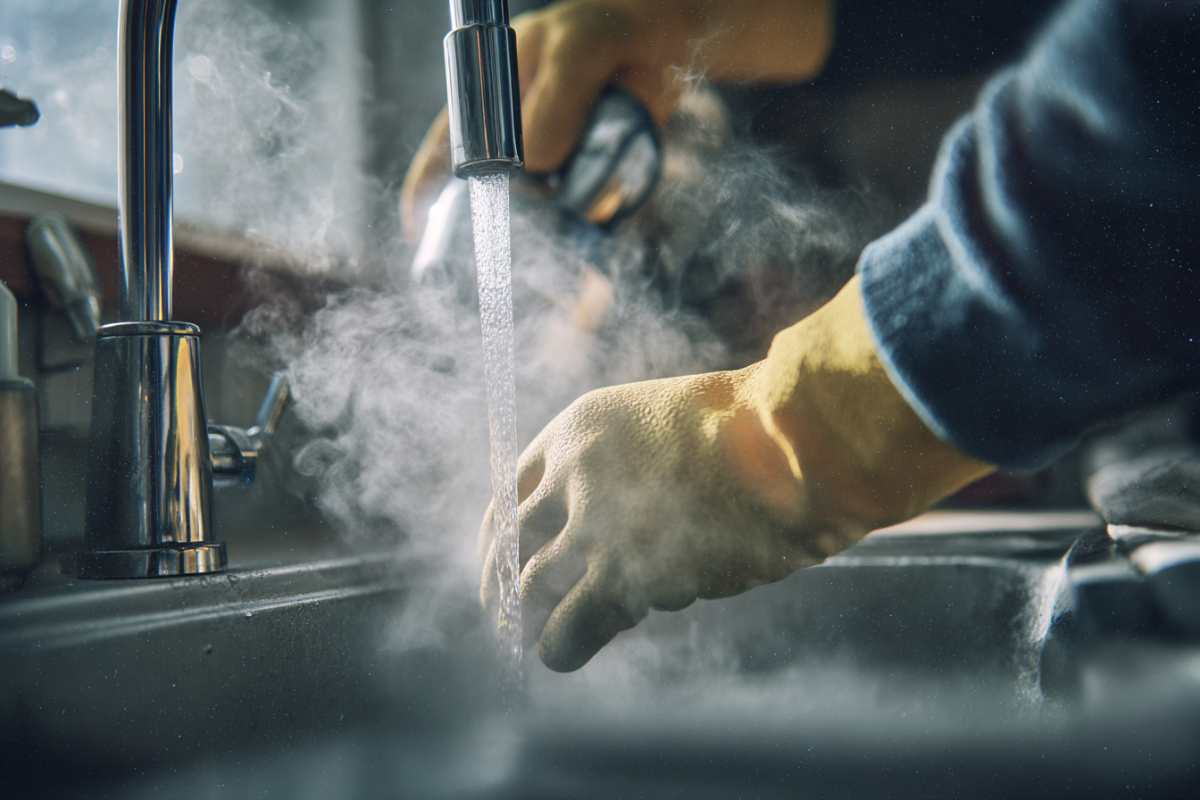Introduction
There’s nothing quite like that slow swirl of water refusing to disappear down your sink. It starts innocently, a little gurgle, a few seconds of delay, and then one day, the drain simply stops cooperating. Hair, soap scum, grease, coffee grounds, and even mineral buildup can quietly conspire to block your pipes.
In kitchens, the usual suspects are fats and food scraps that cool and solidify inside the pipe. In bathrooms, it’s hair and soap binding together like glue. Either way, the result is the same: standing water and frustration.
The cost of ignoring it adds up fast. A professional plumber can charge anywhere from $100 to $300 for what often turns out to be a small obstruction. Letting the problem sit too long can lead to leaks, odors, and even water damage under your sink.
This guide walks through every effective way to unclog a sink drain, from the easiest home fixes to advanced methods and when it’s time to call a pro. You’ll learn natural, mechanical, and chemical solutions, plus how to keep clogs from coming back.
Understanding Sink Drain Clogs
Anatomy of a Sink Drain System
A typical sink drain has a few key parts:
- The sink strainer or stopper at the top (where food or hair gets caught first).
- A tailpiece that connects the drain to the curved P-trap, a U-shaped section that holds a small pool of water to block sewer gases.
- The trap arm and wall pipe, which carry water out toward the main line.
Most clogs occur right in that P-trap because gravity lets debris settle there. In kitchens with garbage disposals, clogs can form between the disposal and the trap. Poor venting or old pipes can make it worse, slowing down the flow.
Why Clogs Form & Persist
Over time, buildup happens naturally. Hair binds with soap to form sticky mats. Grease coats pipe walls and hardens as it cools. Minerals from hard water narrow the passage. Sometimes, the problem’s more serious, like a cracked line or even roots creeping into the system.
Early Warning Signs
- Water drains slower than usual.
- Gurgling sounds hint at trapped air.
- Unpleasant smells rise up after you run water.
- Backflow in other fixtures (a sign of a shared blockage).
Catch these signs early, and you’ll save yourself a mess later.
Beginner Methods: Easy Fixes First
The Boiling Water Flush
If you suspect grease or soap buildup, start here.
- Scoop out any standing water.
- Bring a kettle to a boil.
- Pour the hot water slowly down the drain in two or three stages, pausing a few seconds between pours.
This melts light grease films and pushes them along. Just don’t try it with PVC or plastic pipes, boiling water can warp them. Home Depot actually recommends this as the first line of defense before using any product or tool.
The Baking Soda + Vinegar Method
A classic home chemistry trick that still holds up for mild clogs.
- Pour about ½ cup of baking soda down the drain.
- Add 1 cup of white vinegar.
- Quickly cover the drain with a stopper or plate to keep the fizz inside.
- Wait 10–15 minutes.
- Rinse with hot (not boiling) water.
The fizzing reaction (acid + base) produces carbon dioxide bubbles that help loosen gunk. It’s safe, inexpensive, and eco-friendly, but don’t expect miracles for heavy clogs. Even The Spruce notes that while harmless, it’s often not powerful enough for deep blockages.
Salt + Baking Soda or Salt + Hot Water
For a bit more abrasion, combine ½ cup salt with 1 cup baking soda. Let it sit for 15 minutes, then rinse with hot water. Salt acts as a scrubber and deodorizer. For greasy drains, pour salt alone followed by hot water to help emulsify fats.
This trick from Atco Energy works best as regular maintenance rather than an emergency fix.

Mechanical Methods: When Elbow Grease Matters
Using a Plunger
Grab the right one, a flat cup for sinks (flange plungers are for toilets).
- Remove any stopper or strainer.
- Seal overflow openings or the second basin if it’s a double sink.
- Fill with enough water to submerge the plunger cup.
- Press down firmly and plunge 10–15 seconds.
- Test the drain.
If you hear gurgling or see debris move, you’re close. Repeat if needed. This simple step can clear many stubborn clogs without chemicals.
Zip Tools & Flexible Drain Sticks
Plastic “zip” tools are thin strips with barbs that grab hair. Push one down the drain until resistance, then pull up. It’s messy but satisfying.
These are particularly effective in bathroom sinks where hair tangles just below the stopper. Liquid-Plumr even includes this in their own DIY guide as a safe first tool before using cleaners.
The Plumber’s Snake (Drain Auger)
When clogs live deeper, a snake is your friend. Hand augers use a coiled wire fed into the pipe. Twist the handle to push through or latch onto the obstruction, then retract.
- Hand snakes reach a few feet.
- Motorized drum augers go further (up to 25+ feet), ideal for main lines.
Go slow. Forcing it can damage older pipes or push the clog deeper.
Cleaning the P-Trap Manually
If nothing else works, it’s time to get your hands dirty.
- Put a bucket beneath the P-trap.
- Unscrew the slip nuts by hand or with a wrench.
- Remove and inspect the trap, most blockages hide here.
- Clean it out and reassemble the fittings snugly.
- Run water to test.
Yes, it’s messy. But it’s often the final step before calling a plumber.

Wet/Dry Vacuum
If you have a shop vac, it can sometimes suck out loose blockages. Seal the drain opening with a wet cloth for better suction. Set to “liquid mode,” pull the trigger, and listen for the pop of release.
Be cautious with the pressure, too much force can damage seals.
Compressed Air / Drain Blaster
Air plunger guns work similarly to plungers but with air pressure instead of suction. They deliver a concentrated burst that can dislodge deeper gunk, but also risk forcing it further into the line if misused.
Chemical & Enzymatic Cleaners
Chemical Drain Openers
When natural or mechanical methods fail, commercial drain cleaners can dissolve organic material. These use strong alkalis like sodium hydroxide or bleach-based formulas.
Liquid-Plumr and Drano are the most recognized brands. They break down grease and hair effectively, but they come with serious warnings:
- Always wear gloves and eye protection.
- Never mix products or follow up with vinegar, chemical reactions can produce toxic fumes.
- Avoid use in old or corroded pipes.
If the clog remains after a full treatment, don’t pour more. Fantes Plumbing advises switching to mechanical methods or calling a plumber, as repeated chemical use can corrode pipes or trap fumes.
Enzyme Cleaners
These use bacteria and enzymes to digest organic buildup slowly. They’re safe, non-toxic, and great for monthly maintenance, but they work gradually, over hours or even days.
For prevention, enzyme cleaners keep drains fresh and flowing, but they won’t help if your sink is already full of standing water.
Real-World Examples
Bathroom Sink: Hair & Soap
A common case. Water pooling, faint smell of mildew.
- Remove visible debris and water.
- Flush with hot water.
- Insert a zip tool, pull up tangled hair and soap film.
- Follow with a baking soda + vinegar rinse.
- Remove and clean the P-trap if still slow.
Result: clear drain and better flow in under 30 minutes.
Kitchen Sink: Grease & Food
Sink nearly full, faint odor of old cooking oil.
- Remove excess water.
- Pour boiling water slowly to melt fats.
- Add baking soda and vinegar, let fizz.
- Plunge for pressure buildup.
- Use a hand snake through the trap if water still stands.
If there’s a garbage disposal, check the reset button or use the manufacturer’s wrench to rotate the blades manually before plunging. Liquid-Plumr notes that many clogs occur right between the disposal and trap, not inside the disposal itself.
When to Call a Plumber
DIY has limits. Call a professional when:
- Multiple drains back up at once (sign of main line blockage).
- You’ve unclogged it repeatedly and it keeps returning.
- There’s a persistent sewer odor or gurgling toilets.
- The clog is beyond the trap or involves damaged piping.
Plumbers use camera inspections, hydro-jetting, or pipe replacement when clogs extend deep into the system. Average cost in the U.S. ranges from $150 for minor work to $500+ for main line cleaning.
Avoid forcing high-pressure tools or repeated chemical treatments, they can turn a small clog into a costly repair.
Preventative Maintenance
Daily & Weekly Habits
- Use sink strainers or hair catchers.
- Rinse kitchen sinks with hot water and dish soap after cooking.
- Never pour grease, oil, or coffee grounds down the drain.
Monthly Care
- Pour hot water mixed with a few drops of dish soap to dissolve fats.
- Add enzyme cleaner or mild baking soda + vinegar rinse for freshness.
- Check under-sink pipes for moisture or buildup.
Long-Term Prevention
If your area has hard water, consider a softener to reduce mineral scaling. Proper venting ensures airflow and prevents vacuum pressure that slows drainage. Schedule a professional inspection every few years if you have older plumbing.
FAQs
Is baking soda and vinegar safe for pipes?
Yes, for modern metal or PVC pipes, it’s mild and won’t corrode. But overusing it or relying on it for severe clogs can wear seals or simply waste time, as The Spruce points out.
Can I pour boiling water down any sink?
No. Avoid with plastic or PVC pipes, use hot, not boiling, water instead. Metal pipes handle it fine.
How far can a plumber’s snake reach?
Hand snakes reach about 3–6 feet; drum augers can extend 25 feet or more, per Wikipedia.
Why does my sink keep clogging again?
Probably residual buildup or a structural issue, grease coating, broken pipes, or improper slope. Consistent cleaning helps prevent recurrence.
Can I mix different chemical drain cleaners?
Absolutely not. Mixing acids and alkalis can create toxic gas or heat. Stick to one product at a time.
What if my drain stopper won’t come out?
Some pop-up stoppers unscrew, others need removal of a pivot rod under the sink. If it’s stuck, plunge over it or proceed with a zip tool.
Summary & Takeaways
Start simple: hot water, baking soda, and vinegar solve most minor clogs. Move to plungers or zip tools if that fails. For tougher jobs, snakes or disassembling the P-trap often work. Chemical options are effective but risky, use sparingly.
Above all, prevention beats cure. Catch hair before it enters, rinse with hot water weekly, and treat drains monthly with enzymes or mild cleaners. Most sink clogs don’t need a plumber, just a bit of patience and the right method.
But if your sink still won’t drain after all this? It’s time to hand it off. Sometimes, the smartest DIY move is knowing when to stop.


